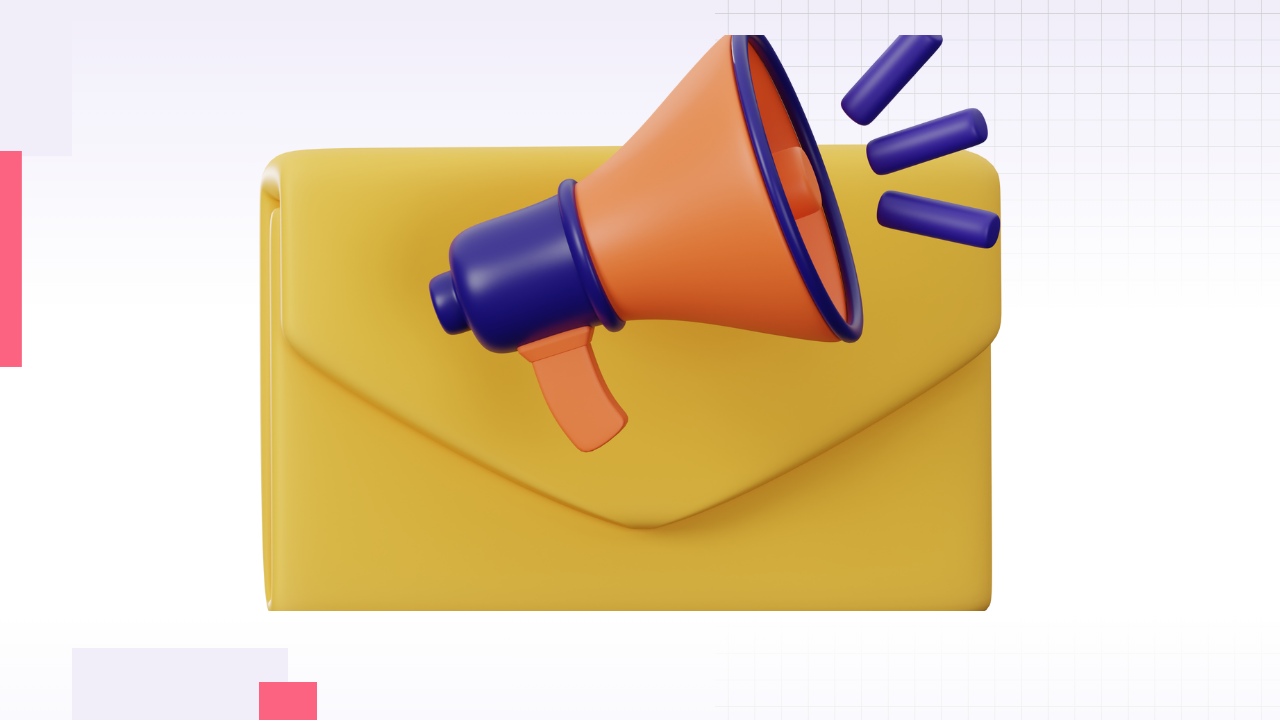Email marketing remains a powerful tool for businesses. It allows direct communication with customers, fostering relationships and driving sales. With personalized content, businesses can engage their audience more effectively. Email campaigns can be tailored to specific demographics, enhancing relevance and impact.
Measuring success through metrics like open rates and click-through rates provides valuable insights. This data helps in refining strategies for better results. Email marketing is also cost-effective, making it accessible for businesses of all sizes. By integrating email marketing into your digital strategy, you can achieve higher customer retention and conversion rates. It's a vital component of modern marketing efforts.
The Importance Of Email Marketing
Email marketing remains a powerful tool in the digital marketing landscape. It allows businesses to connect directly with their audience. Understanding the importance of email marketing can significantly boost your brand's success. This blog post dives into the key aspects that make email marketing essential for businesses.
Reaching Your Audience
One of the most significant advantages of email marketing is its ability to reach your audience effectively. Unlike social media, where algorithms control visibility, emails land directly in your subscribers' inboxes. This ensures your message is seen by those who have shown interest in your brand.
Email marketing allows for:
-
Targeted Campaigns: You can segment your email list based on various criteria. This allows for personalized content that resonates with different audience segments.
-
Higher Engagement: Emails have a higher engagement rate compared to social media posts. People are more likely to open and read emails than interact with social media content.
-
Measurable Results: Email marketing platforms provide detailed analytics. You can track open rates, click-through rates, and conversions. This data helps refine future campaigns.
Consider the following table highlighting the benefits of email marketing:
|
Benefit |
Description |
|---|---|
|
Targeted Campaigns |
Send personalized content to segmented audiences. |
|
Higher Engagement |
Emails have higher open and read rates. |
|
Measurable Results |
Track and analyze performance metrics. |
Building Customer Relationships
Email marketing is also crucial for building and maintaining customer relationships. Sending regular updates keeps your audience informed about new products, services, and promotions.
Here are some ways email marketing helps build customer relationships:
-
Personalized Communication: Addressing customers by name and sending customized content makes them feel valued.
-
Regular Updates: Consistent communication helps keep your brand top-of-mind. It ensures customers are always aware of what you offer.
-
Exclusive Offers: Sending special deals and discounts to subscribers can enhance loyalty. Customers feel appreciated when they receive exclusive benefits.
Building strong relationships with customers leads to:
-
Increased Customer Loyalty: Engaged customers are more likely to become repeat buyers.
-
Word-of-Mouth Marketing: Satisfied customers often share their positive experiences, attracting new clients.
Email marketing remains a vital component of any digital marketing strategy. Its ability to reach targeted audiences and build strong customer relationships makes it indispensable.
Creating Effective Email Campaigns
Email marketing is a powerful tool for businesses. It helps reach customers directly in their inboxes. Creating effective email campaigns is key to engaging your audience and driving results. This involves crafting compelling content and designing engaging templates. Let's dive into these crucial aspects.
Crafting Compelling Content
To create compelling content, focus on what interests your audience. Here are some tips to make your emails stand out:
-
Personalize your messages: Use the recipient's name and tailor the content to their preferences.
-
Write a catchy subject line: The subject line should grab attention and make the reader want to open the email.
-
Keep it short and sweet: People have short attention spans. Use concise, clear language.
-
Include a strong call-to-action (CTA): Tell readers what you want them to do, like "Buy Now" or "Learn More."
Here's a simple table to summarize key points:
|
Tip |
Description |
|---|---|
|
Personalize |
Use names and tailor content |
|
Catchy Subject Line |
Grab attention immediately |
|
Keep it Short |
Use concise language |
|
Strong CTA |
Encourage action |
Use these strategies to make your content more engaging. Always test different approaches to see what works best for your audience.
Designing Engaging Templates
A well-designed template makes your email visually appealing. Here are some tips for designing engaging templates:
-
Use a clean layout: A clutter-free design is easier to read and looks professional.
-
Incorporate your brand colors: Use colors that match your brand identity to create a cohesive look.
-
Use high-quality images: Visuals can make your email more attractive and engaging.
-
Ensure mobile-friendliness: Many people read emails on their phones. Make sure your design looks good on all devices.
Here's a quick checklist for your email template:
|
Design Element |
Checklist |
|---|---|
|
Layout |
Clean and clutter-free |
|
Brand Colors |
Consistent with brand |
|
Images |
High-quality and relevant |
|
Mobile-Friendliness |
Responsive design |
By following these tips, you can create email templates that captivate your audience. Testing different designs can help you find what resonates best with your readers.
Measuring Email Marketing Success
Email marketing is a powerful tool for businesses to connect with their audience. But how do you know if your email campaigns are working? Measuring email marketing success is crucial. It helps you understand what’s working and what needs improvement. By tracking key metrics and analyzing campaign performance, you can make data-driven decisions to boost your email marketing efforts.
Tracking Key Metrics
To measure the success of your email marketing campaigns, you need to track key metrics. These metrics provide insights into how your emails are performing. Here are some important metrics to track:
-
Open Rate: The percentage of recipients who open your email. This metric indicates how effective your subject lines are.
-
Click-Through Rate (CTR): The percentage of recipients who click on links within your email. This shows how engaging your content is.
-
Bounce Rate: The percentage of emails that could not be delivered. High bounce rates can hurt your sender reputation.
-
Unsubscribe Rate: The percentage of recipients who opt out of your email list. A high unsubscribe rate may indicate that your content is not relevant.
-
Conversion Rate: The percentage of recipients who take a desired action, such as making a purchase. This metric is crucial for measuring ROI.
Here's a table summarizing these key metrics:
|
Metric |
Description |
Importance |
|---|---|---|
|
Open Rate |
Percentage of opened emails |
Indicates subject line effectiveness |
|
CTR |
Percentage of clicked links |
Shows content engagement |
|
Bounce Rate |
Percentage of undelivered emails |
Affects sender reputation |
|
Unsubscribe Rate |
Percentage of opt-outs |
Indicates content relevance |
|
Conversion Rate |
Percentage of desired actions taken |
Measures ROI |
Analyzing Campaign Performance
Once you've tracked key metrics, the next step is to analyze your campaign performance. This involves looking at the data and understanding the story it tells. Here are some steps to help you analyze your email marketing campaigns:
-
Compare Metrics: Look at your metrics over time. Are your open rates improving? Is your CTR increasing?
-
Segment Your Audience: Break down your audience into different segments. Analyze how each segment responds to your emails. This can help you tailor your content.
-
A/B Testing: Test different elements of your emails. Try different subject lines, images, and call-to-actions. See which variations perform better.
-
Analyze Time and Day: Check if the time and day you send emails affect your metrics. Find the best time to reach your audience.
-
Review Content: Look at the content that gets the most engagement. Replicate this in future campaigns.
By following these steps, you can gain valuable insights into your email marketing efforts. This will help you improve your campaigns and achieve better results.
Best Practices For Email Marketing
Email marketing remains a powerful tool for businesses. To achieve the best results, it's essential to follow best practices for email marketing. These practices ensure your emails are effective, engaging, and drive the desired action from your audience.
Optimizing For Mobile Devices
More than half of all emails are opened on mobile devices. It's crucial to optimize your emails for mobile viewing. Here are some key practices:
-
Use a responsive design: Ensure your email layout adapts to different screen sizes.
-
Keep subject lines short: Mobile screens display fewer characters. Aim for 30-40 characters.
-
Single-column layout: This makes your email easier to read on small screens.
-
Large fonts: Use at least 14px for body text and 22px for headlines.
-
Touch-friendly buttons: Make sure buttons are large enough to tap easily. Aim for a minimum of 44x44 pixels.
Here's a quick comparison table for desktop vs. mobile optimization:
|
Aspect |
Desktop |
Mobile |
|---|---|---|
|
Subject Line Length |
50-60 characters |
30-40 characters |
|
Font Size |
12px (body), 18px (headline) |
14px (body), 22px (headline) |
|
Layout |
Multi-column |
Single-column |
By following these practices, you'll ensure your emails are accessible and engaging on mobile devices.
Personalizing Email Content
Personalization can significantly increase engagement rates. Personalizing email content makes recipients feel valued and understood. Here are some ways to personalize your emails:
-
Use the recipient's name: Addressing the recipient by their first name can make the email feel more personal.
-
Segment your audience: Group your email list based on demographics, purchase history, and other relevant criteria.
-
Tailor content to segments: Send content that is relevant to each segment's interests and behaviors.
-
Dynamic content blocks: Use different content blocks within the same email to show different content to different segments.
-
Behavior-triggered emails: Send emails based on user actions, like browsing history or past purchases.
Here's an example of how personalization can be implemented:
|
User Segment |
Personalized Content |
|---|---|
|
New Subscribers |
Welcome email with a discount code |
|
Past Purchasers |
Recommendations based on previous purchases |
|
Inactive Users |
Re-engagement email with special offers |
By incorporating these personalization techniques, you can boost engagement and conversion rates, making your email marketing efforts more successful.
The Future Of Email Marketing
Email marketing is a dynamic field that continuously evolves. The future of email marketing promises exciting changes. Marketers need to stay updated with the latest trends and innovations. Understanding consumer behavior will be crucial for success.
Trends And Innovations
The future of email marketing will see several trends and innovations that will reshape the industry. Here are a few key trends:
-
Personalization: Emails will become more tailored to individual preferences. Advanced algorithms will analyze user behavior to create personalized content.
-
Interactive Emails: Emails will feature interactive elements like polls, surveys, and videos, making them more engaging.
-
AI and Automation: Artificial Intelligence will play a bigger role in email marketing. Automated campaigns will become smarter and more efficient.
-
Mobile Optimization: More people check emails on their phones. Emails will be optimized for mobile devices to ensure a seamless experience.
-
Data Privacy: With increasing data privacy concerns, marketers will focus on building trust and ensuring compliance with regulations.
Incorporating these trends will require businesses to invest in new technologies and tools. Here's a quick overview:
|
Trend |
Impact |
|---|---|
|
Personalization |
Increased engagement and conversions |
|
Interactive Emails |
Higher click-through rates |
|
AI and Automation |
Efficient campaign management |
|
Mobile Optimization |
Better user experience |
|
Data Privacy |
Enhanced trust and compliance |
Adapting To Changing Consumer Behavior
Consumer behavior is changing rapidly. Marketers must adapt to stay relevant. Here are some strategies:
-
Segmentation: Group your audience based on preferences and behavior. This helps in sending targeted emails.
-
Engagement Metrics: Monitor metrics like open rates and click-through rates. Adjust your strategy based on these insights.
-
Content Relevance: Ensure your content is relevant to your audience. Use data analytics to understand what works.
-
Frequency Management: Avoid bombarding your audience with too many emails. Find the right balance to keep them engaged.
-
Feedback Loop: Encourage feedback from your audience. Use this feedback to improve your campaigns.
Understanding consumer behavior will help in crafting effective email campaigns. Here’s a quick strategy table:
|
Strategy |
Benefit |
|---|---|
|
Segmentation |
Targeted content and higher engagement |
|
Engagement Metrics |
Data-driven decisions |
|
Content Relevance |
Improved user experience |
|
Frequency Management |
Optimal engagement |
|
Feedback Loop |
Continuous improvement |
By focusing on these strategies, businesses can adapt to changing consumer behavior. This will ensure the success of their email marketing campaigns.
Frequently Asked Questions
Can You Make Money With Email Marketing?
Yes, you can make money with email marketing. Build a targeted list, create engaging content, and promote products or services. Effective strategies and consistent efforts lead to revenue growth.
What Are The Four Types Of Email Marketing?
The four types of email marketing are: 1. **Promotional Emails:** Focus on sales and special offers. 2. **Transactional Emails:** Confirmations, receipts, and notifications. 3. **Lifecycle Emails:** Target specific stages in the customer journey. 4. **Newsletter Emails:** Share updates, news, and valuable content.
What Is An Email Marketing Strategy?
An email marketing strategy is a plan for reaching customers via email. It involves targeting, creating content, and analyzing results. Effective strategies boost engagement and drive sales.
What Are The 7 Email Marketing Strategies?
The 7 email marketing strategies are: segment your audience, personalize messages, use compelling subject lines, provide valuable content, include clear CTAs, optimize for mobile, and analyze performance.
What Is Email Marketing?
Email marketing is a digital strategy to send promotional or informational emails to a list of subscribers.
How Does Email Marketing Work?
It works by sending targeted emails to potential or current customers to promote products, services, or build relationships.
Why Is Email Marketing Important?
Email marketing is important because it helps businesses connect directly with their audience, increasing engagement and conversions.
Conclusion
Email marketing remains a powerful tool for businesses. It drives engagement, boosts sales, and nurtures customer relationships. Implementing these strategies can yield significant results. Stay consistent, personalize your messages, and analyze performance. Embrace email marketing to elevate your brand and achieve your goals.
Your success is just an email away.



